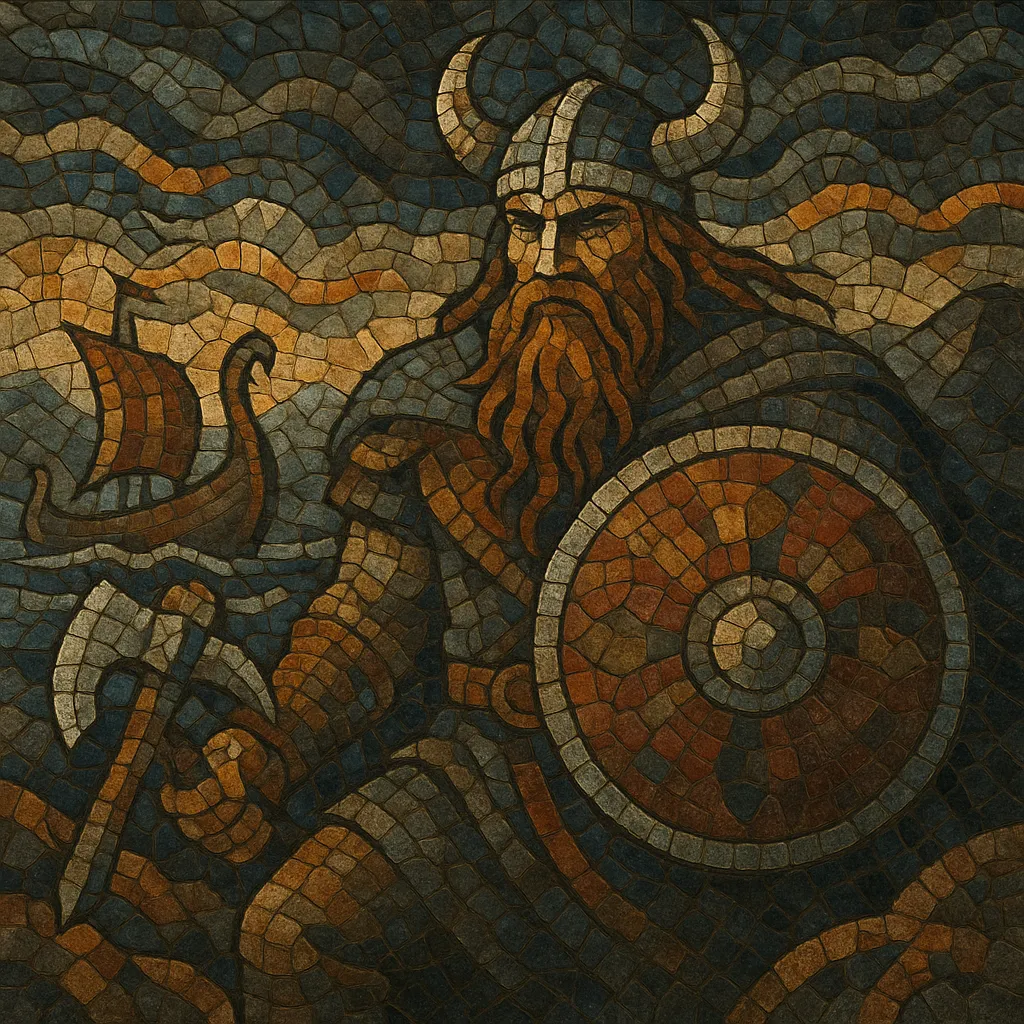Viking metal is an epic, mid-to-fast tempo form of extreme metal that fuses the raw timbres of black metal and doom/heavy metal with Scandinavian folk colors and narrative lyrics about Norse history, mythology, seafaring, and pre-Christian culture. It favors grand, chant-like melodies, martial rhythms, and a sense of windswept atmosphere.
Compared with straight black metal, viking metal often slows down for stately, hymn-like passages, uses choirs and clean baritones alongside harsh vocals, and adds acoustic or folk instrumentation to evoke Northern landscapes. The result is a sound that feels both heroic and melancholic, balancing triumphant battle imagery with elegiac reverence for the past.
Bathory (Sweden) laid the foundation by pivoting from raw black/thrash origins to a slower, grander, and hymn-like approach on albums such as Blood Fire Death (1988) and Hammerheart (1990). These records introduced epic song structures, choirs, and Norse themes, signaling a new aesthetic that would soon be called “viking metal.”
Norwegian bands including Enslaved and Einherjer developed the template further, blending black metal’s tremolo riffing and harsh vocals with modal, folk-inflected melodies and storytelling rooted in Norse mythology. Projects like Falkenbach (Germany) expanded the style’s melodic and atmospheric edge, while Swedish acts such as Mithotyn and Thyrfing refined its martial rhythms and chorus-driven hooks.
The 2000s saw viking metal’s reach widen. Finnish groups like Moonsorrow pushed long-form, cinematic arrangements; Windir (Norway) fused black metal urgency with poignant folk melodies; and Týr (Faroe Islands) emphasized clean vocals, harmonized leads, and traditional melodies. Although musically closer to melodic death metal, Amon Amarth popularized viking themes globally, helping the imagery and ethos of the style reach mainstream metal audiences.
Contemporary viking metal retains its epic scale while embracing higher-fidelity production, layered choirs, and broader folk instrumentation. Lyrically, bands continue to balance mythic narratives with historical and cultural reflection. The style remains a touchstone for pagan/folk-leaning extreme metal and a cultural conduit for Scandinavian heritage within modern heavy music.
Use two guitars (one for tremolo-picked melodic lines, one for rhythm), bass, and a powerful drum kit with tom-heavy, martial patterns. Add keyboards/choirs for grandeur and optional folk instruments (nyckelharpa, fiddle, whistles, tagelharpa, bouzouki) or acoustic guitar for traditional color.
Favor minor keys (E/D/C minor) and modal flavors common in Nordic folk (Dorian and Mixolydian). Write strong, chant-like themes that can be harmonized in thirds or fifths, and reinforce them with backing choirs or layered leads. Use pedal tones and open fifths to evoke stark, windswept space.
Alternate between mid-tempo, stomping “march” sections and faster, surging passages (double-kick or blast-beat-lite). Build songs in movements: atmospheric intro → heroic verse/chorus → reflective, folk-tinged bridge → climactic reprise. Incorporate rhythmic drones or ostinati to suggest rowing/oceanic motion.
Blend harsh vocals for intensity with clean, resonant baritones for anthemic choruses and choral refrains. Lyrics should draw from Norse sagas, mythology, seafaring, rites, and historical episodes—balancing heroic imagery with elegiac, nature-bound reflection. Use occasional Old Norse terms or poetic kennings for authenticity.
Layer guitars to thicken harmony and double key melodic lines with vocals or folk instruments. Employ reverberant but clear mixes: wide stereo images for choirs and keys, solid low-end for drums and bass, and a present midrange for guitars. Interleave acoustic interludes to pace long tracks and heighten the epic arc.


